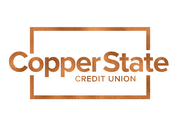Top Loan Types + How They Hurt or Help Your Bottom Line
Why didn't I learn this in high school? There are 348,928 terms to know when it comes to loans (pun fully intended) and we're here to share basic definitions of each so that you feel confident and empowered as you make loan decisions going forward.
Top Loan Types + How They Hurt or Help Your Bottom Line
A loan can have more than one of the below characteristics. For example, a home equity line of credit is secured (by the house). It's also revolving; and it's a variable rate loan; *deep breath* We've got this.
Secured
When a loan is secured, it has something backing it called collateral. This could be a physical item or cash. Car loans are secured by the car, home loans are secured by the home, etc. Secured loans tend to have lower interest rates than unsecured. On a very basic level, this is because the item could be recovered if the person stopped making payments, so it's less risky of a loan to give.
Unsecured
A loan with no collateral. This includes unsecured personal loans, credit cards, lines of credit, and anything else that doesn't have a physical item or cash put down as collateral. Unsecured loans tend to have higher rates than secured ones, because there's nothing to take away if the person stops making payments.
Open-End a.k.a. Revolving Loan
This type of loan allows you to borrow and pay back an amount repeatedly. For example, a credit card - you charge it, then pay it back, then can charge it again. This is also true for personal lines of credit and home equity lines of credit - you can borrow the money, use it, pay back the loan, and then do it all again.
Closed-end a.k.a. Term Loan
This is a loan where there is one fixed amount that you borrow at the beginning (known as the principal), then pay back in full over the course of coming months or years. The 'term' is the length of time in which you're paying it back. Many people don't realize that there are home equity loan options that are closed-end and fixed rate, which can save you money.
Credit Score Hack: Credit bureaus like to see what they call a 'mix' of credit, which means you have some term loans and some revolving, some secured and some unsecured. Having more than one type will actually increase your credit score! See more tips and tricks in our Credit Score Chart.
Loan Interest Rates
Fixed Rate
On a fixed rate loan, the rate of interest (%) that you pay on the amount borrowed stays the same over the course of the loan. Rates vary widely depending on the loan type and can be anywhere from about 3% to over 30% in terms of an annual percentage rate (APR). Paying attention to your rate and getting the lowest one you can? It'll pay off. 😉
Variable Rate
The interest rate can go up or down over the course of the loan term. Variable rates are typically seen on revolving products such as credit cards and lines of credit, but can show up in the mortgage world as well in the form of an ARM (adjustable rate mortgage). If loan rates in the market are low, variable works fine! But if they go way up, as we've been seeing, it becomes tricky to make progress on loan payoff because so much of the payment is going towards interest.
Loan Types and Loan Interest Rates
Did you know all banks and credit unions are required to provide you with the APR, not just the rate. Why? Because it ensures a realistic view of the loan and its overall costs.
The APR on a loan at Bank 1 and APR at Bank 2 is like comparing apples to apples 🍎 🍎
But advertised Interest Rates at Bank 1 and Bank 2 could have a very different impact on your wallet. Which would be like comparing apples to oranges. 🍏🍊
Example:
If Bank 1 says "Get a $10,000 personal loan at only 5% interest rate!"
While Bank 2 says "Our personal loans are available at 6.12% APR!"
Bank 1's deal sounds better, right? But in this case, Bank 1 is charging a yearly maintenance fee and an underwriting fee for the loan. When all that's factored in:
Bank 1: 7.25% APR
Bank 2: 6.12% APR (Winner!)
Because regulations force institutions to provide APR, it makes it easier for you to compare Bank 1 and 2 and make an informed decision factoring in all costs of a loan. And because Bank 2's APR is lower than Bank 1's - Bank 2 is going to save you more money on that loan. Give me the 🍎 🍎 every day!
Top 10 Most Common Loan Types
1. Home Loans
2. Auto Loans
3. Personal Loans and Credit-Builder Loans
6. Student Loans
7. Credit Cards
10. Payday Loans and Title Loans*
* These types of lenders can be predatory and these types of loans are not going to help you financially. That's why we wrote this article - Why Credit Unions Say Beware of Payday Loans and Car Title Loans Build a relationship with a credit union, even if you don't think you can get an account. We can often work with you to provide some options.
Our Favorite Calculators for Making Loan Decisions
The reality is, sometimes you just need to crunch the numbers.
Click here for our favorite free financial calculators to help you do just that. From credit cards to auto loans, mortgage calculators and more - we've got you covered.
And remember - we love to provide free resources for our members and our community. If you're trying to get out of debt, Get Our Debt Relief Bundle and Say Cheers to a Debt Free Future, and download some helpful worksheets and tutorials.
1 This article is intended to be a general resource only and is not intended to be nor does it constitute legal advice. Any recommendations are based on opinion only. Rates, terms, and conditions are subject to change and may vary based on creditworthiness, qualifications, and collateral conditions. All loans subject to approval. Membership is required.



.gif?width=350&name=Untitled%20design%20(1).gif)
